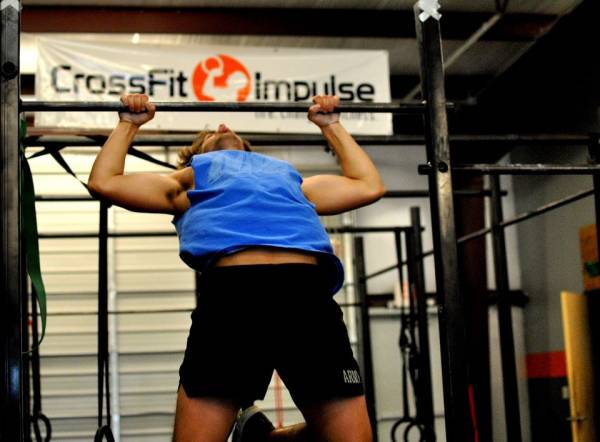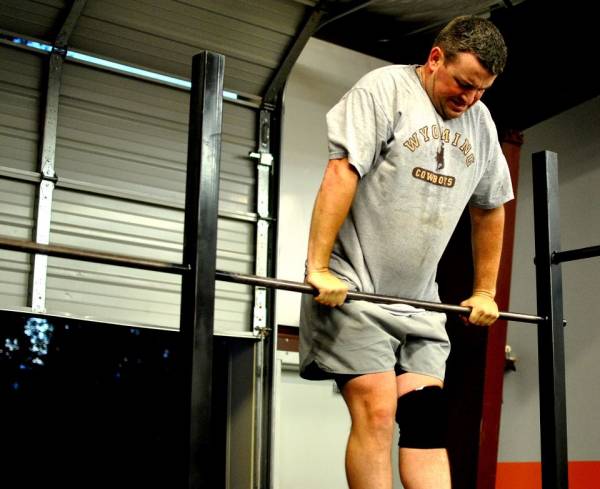As a coach, I have seen so many variations of bar muscle up progressions. Many I have seen are extremely dangerous and involve bands, boxes, and a lack of proper skill and strength foundations.
This article is going to explain the proper foundational movements to get your first bar muscle up – and how to get that first bar muscle up without injuring yourself in the process.
As a coach, I have seen so many variations of bar muscle up progressions. Many I have seen are extremely dangerous and involve bands, boxes, and a lack of proper skill and strength foundations.
This article is going to explain the proper foundational movements to get your first bar muscle up – and how to get that first bar muscle up without injuring yourself in the process.
Proper Foundation #1: Strict Pull Ups
The number one foundational movement for the bar muscle up is the strict pull up. If you don’t have a strict pull up, a bar muscle up will be difficult to accomplish. Development of the latissimus dorsi, trapezius (upper and lower), supraspinatus, infraspinatus, teres minor, and subscapularis are important, not just for strength, but also for protection of the rotator cuff muscles and back. You will work other muscles as well, but these are particularly important to the function to bar muscle up. Practice not using the suicide grip (thumb on same side as your fingers) and attempt to grip the bar with the thumbs under the bar.
To get a strict pull up you can do the following exercises:
- Top Down Pull Up Negatives with a Box (remove box as you get stronger)
- Ring Rows
- Pendlay Rows
- Gymnastic Rings In and Outs
- Gymnastic Rings Archers
- Gymnastic Rings Supermans
- Isometric Hold at the Top of the Bar
All exercises can be done as either pull ups (supinated grip) or chin ups (pronated grip). To be well rounded, you should do both. But, please, don’t use any bands on any of these movements. These are just a few exercises that you can do to build strength and get a strict pull up. After you have around five to ten unbroken strict pull ups, see if you can add a little bit of weight. Use a weight belt and add five pounds to start. This will help you get stronger and develop height when you get to chest to bar pull ups.
Proper Foundation #2: Core Strength
Not only is the strict pull up important to the bar muscle up, but so is core strength. The most important core movements that help with the actual bar muscle up movement are:
- Hollow Body Into a Hollow Rocker
- Arches Into Archer Rocks
- Hollow to Gymnastics Tuck
- Parallette L-Sit (one leg at a time until you can do both)
Proper Foundation #3: The Kipping Pull Up
Next on your journey to the bar muscle up is learning how to kip correctly. Kipping is more of a skill than a strength movement. It requires good positional body awareness and some of the basic skills you’ve been practicing up to this point will start to pay off. For example, the hollow and arch are examples of basic skills that translate into the two phases of the kipping motion.
Performing the hollow and arch on the ground is an awesome place to start. These movements build a kinesthetic awareness of where the body is in space. Many times people will use their knees to in order to kip, but this is not proper positioning, and it’s evident because the hollow, or “closed,” position does not look like this on the ground. The same positioning from the ground needs to translate at the bar, which means the legs are together tight and straight. Athletes should automatically feel latissimus dorsi activation in the hollow position. When the athlete switches to the arch, or “open,” position in the kip it looks like the superman position on the ground. The hips are open in both phases of the movement. The legs are straight throughout.
Once the athlete feels comfortable with these two positions, have them try the full movement on the bar. This means at the hollow position the load is transferred above the bar, or in other words, they pull and propel themselves up and get their chin above the bar. The athlete’s legs should remain straight during the kip. When the knees are bent it creates uncontrolled momentum. The kip should be a controlled movement without any crazy action.
Proper Foundation #4: Chest-to-Bar Pull Ups
 This is the next progression from the kipping pull up. I recommend having around five to ten strict pull ups, and around ten or more unbroken kipping pull ups. The athlete should have the ability to do some weighted pull ups. This is my own personal recommendation and every gym is different in regards to progressive movements and when to move forward.
This is the next progression from the kipping pull up. I recommend having around five to ten strict pull ups, and around ten or more unbroken kipping pull ups. The athlete should have the ability to do some weighted pull ups. This is my own personal recommendation and every gym is different in regards to progressive movements and when to move forward.
If the athlete is pulling right to the chest, this means the athlete does not have the pull-strength to get a bar muscle up. Once the athlete can get the bar to the xiphoid process, that is when he or she is ready to move on into the next phase. I recommend the athlete have the ability to hit the xiphoid process regularly while using a regular kip. This means the athlete should have a solid kip, but also have pull strength.
Proper Foundation #5: Box Bar Muscle Ups
The final progression for the bar muscle up is using a box. Similar to a jumping pull up, the athlete will mimic a kip on a box and jump into the correct position on a bar muscle up. These are harder than they sound. The box should be low enough so the athletes must use strength to pull up and press out on the last bit on the bar muscle up. This will help build motor memory for the athletes and give them an idea of where they need to pull in order to get into a safe position at the press out. As athletes gets stronger, lower the box until they are starting in the hang position.
Check out this short clip of Samantha Briggs for an example:
The Special Challenge of the Bar Muscle Up
The bar muscle up is actually harder than doing a strict muscle up on the rings. The bar is a non-moving object, which can make it especially difficult for the athlete to get into the position to press out. Unlike the rings, which can move out of the athlete’s way, the bar requires the athlete move around it. But I have seen the bar muscle up done and it’s an excellent goal.
 Bar muscle ups can be difficult to master, but not impossible. What makes bar muscles up difficult is when you decide not to follow the proper progressions and build the appropriate foundation. If you do not go through the progressions, injuries can occur because you are lacking in strength and doing explosive kipping. Follow safe progressions and the bar muscle up will be in your future.
Bar muscle ups can be difficult to master, but not impossible. What makes bar muscles up difficult is when you decide not to follow the proper progressions and build the appropriate foundation. If you do not go through the progressions, injuries can occur because you are lacking in strength and doing explosive kipping. Follow safe progressions and the bar muscle up will be in your future.
References:
1. Low, S., “Overcoming Gravity: A Systematic Approach to Gymnastics and Bodyweight Strength.” (Lexington: Steven Low, 2012), 499-500
2. Baechle, Thomas R and Earle, Roger W., “Essentials of Strength and Conditioning, Third Edition.” (Illinois: Human Kinetics, 2008), 333-337
3. Biel, Andrew., “Trail Guide to The Body, Third Edition.” (Colorado: Books of Discovery, 2005), 69-90
Photos courtesy ofCrossFit Impulse.






